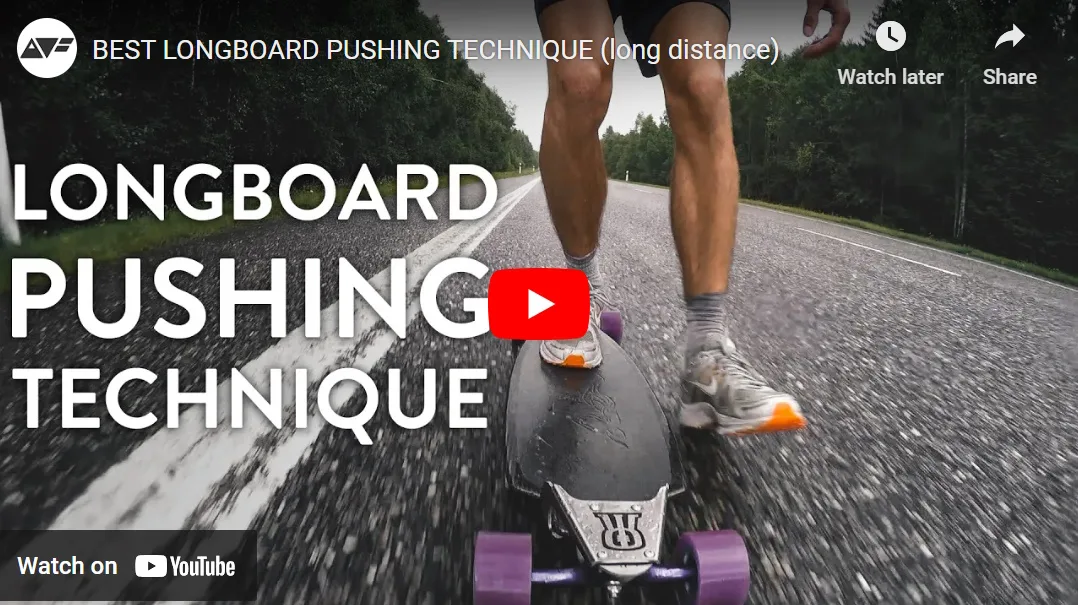I recently watched the above video on long-distance longboarding techniques, and it got me thinking about my own experiences and how much I’ve learned over the years.
The video makes a great point about the best pushing technique being similar to a slow running motion. This approach is all about what feels natural to our bodies.
The video suggests that, just like when you run, you should place your feet straight next to each other and roll off from the heel to the toes. This is spot on.
When I first started longboarding, I made the rookie mistake of pushing off only with my toes. It was exhausting and not very efficient.
Learning to start with my heel, bend my knees a bit, and roll through to my toes made a huge difference. It feels more natural and helps maintain balance and energy.
Why a Drop Down Deck Helps
The video mentions using a drop-down deck for long-distance rides. A drop-down deck keeps you closer to the ground, so you don’t have to bend your pushing leg as much.
This makes each push smoother and less tiring over long distances. When I switched to a drop-down deck, I noticed an immediate improvement in how easy it was to maintain my speed without getting worn out.
Now, something the video didn’t cover but I think is worth mentioning is using a bracket setup such as the Loaded Fathom LDP (Long Distance Pumping) .
This setup really elevates your longboarding game. It optimizes the height and leverage of your board, making pushing and pumping over long distances much easier.
The first time I used the Fathom, I was blown away by how much smoother my rides were. It felt like I could go on forever without tiring out.
For anyone serious about longboarding, a bracket setup is a game-changer. You can read more about my experience with the Fathom here.
Skogging: Combining Skating and Jogging
Another technique that pairs well with these tips is skogging, which combines skating and jogging.
Skogging involves using both legs to push alternately, similar to jogging. This not only gives each leg a break but also helps maintain a steady rhythm and speed.
I find skogging particularly useful on longer rides. It makes the journey more dynamic and less monotonous, spreading the workload evenly across both legs.
The challenge is to push with your alternate leg, which really feels really weird at first, like your skating for the first time.
With some time and practice, however, it will become natural as your brain starts building new connections.
Once you get (almost) as comfortable pushing with either leg, the sky becomes the limit as to how long and how far you can go!
Final Thoughts
Incorporating these techniques and setups can really improve your longboarding experience. Start with your heel, roll through to your toes, and consider investing in a drop-down deck, or even better, an LDP bracket setup.
Also set out to learn skogging for a completely upgraded workout! These adjustments can make your long rides more enjoyable and a lot more powerful.

